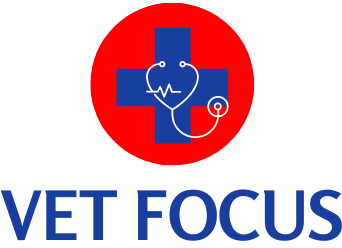Being prepared to provide immediate assistance can mean the difference between life and death for these beloved members of our families.In this guide, we will delve into the essential first aid tips in veterinary care, safety measures, common emergencies, necessary supplies, species-specific considerations, and the importance of preventive education.
Assessment and Safety
- Initial Assessment: Begin by assessing the overall situation, ensuring both your safety and the animal's safety.
- Restraint: Safely restrain the injured animal to prevent further harm. Use muzzles or towels for dogs and cats, and consider using a blanket for larger animals.

Contact a Professional
- Veterinarian: In any serious injury or illness, contact a veterinarian immediately. They can provide guidance and may even talk you through certain procedures over the phone.
Common Veterinary Emergencies
- Wounds and Bleeding: Apply pressure to control bleeding using a clean cloth or bandage. Keep the animal calm to reduce blood flow.
- Fractures: Immobilize the injured limb using a splint or bandage to prevent further damage. Transport the animal carefully to the vet.
- Choking: Check the mouth for obstructions and try to remove them without getting bitten. Use the Heimlich maneuver if necessary.
- Heatstroke: Move the animal to a cooler area, wet their fur with cool water, and provide water to drink. Avoid ice-cold water.
- Poisoning: Identify the toxin if possible and contact the veterinarian. Do not induce vomiting unless instructed by a professional.

Basic First Aid Supplies
- First Aid Kit: Maintain a well-equipped first aid kit containing items like bandages, antiseptic wipes, scissors, and a thermometer.
- Emergency Contact Numbers: Always have your veterinarian's contact information readily available.
Animal Specific Tips
- Cats and Dogs: Be cautious when approaching scared or injured animals. Use a soft, soothing tone to calm them.
- Horses: Ensure the safety of both you and the horse. Approach slowly and calmly, and avoid sudden movements.
- Birds and Small Pets: Handle with care and keep them warm. For birds, place them in a quiet, dark, and warm environment.
Transport and Handling
- Proper Transport: Use a secure carrier or blanket for small animals and a sturdy crate or vehicle for larger ones.
- Minimize Stress: Keep the injured animal as calm and quiet as possible during transportation.

Prevention and Education
- Pet Safety: Educate yourself on common hazards and how to prevent injuries. Keep dangerous substances and objects out of reach.
- CPR and Rescue Breathing: Consider taking a pet CPR and first aid course to be prepared for emergencies.
Remember that these first aid tips are not a substitute for professional veterinary care. Always consult a veterinarian for proper diagnosis and treatment, and keep their contact information readily available. Your quick and appropriate actions can make a significant difference in the well-being of an injured or ill animal.
For additional recommendations and guidance about veterinary science as well as practice, Kindly visit our website thevetfocus.com

